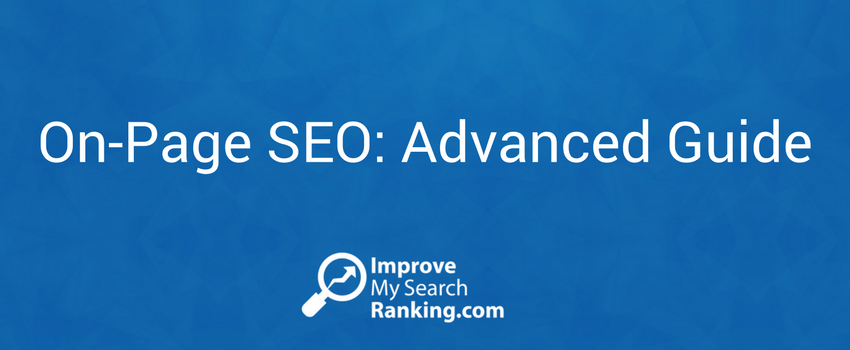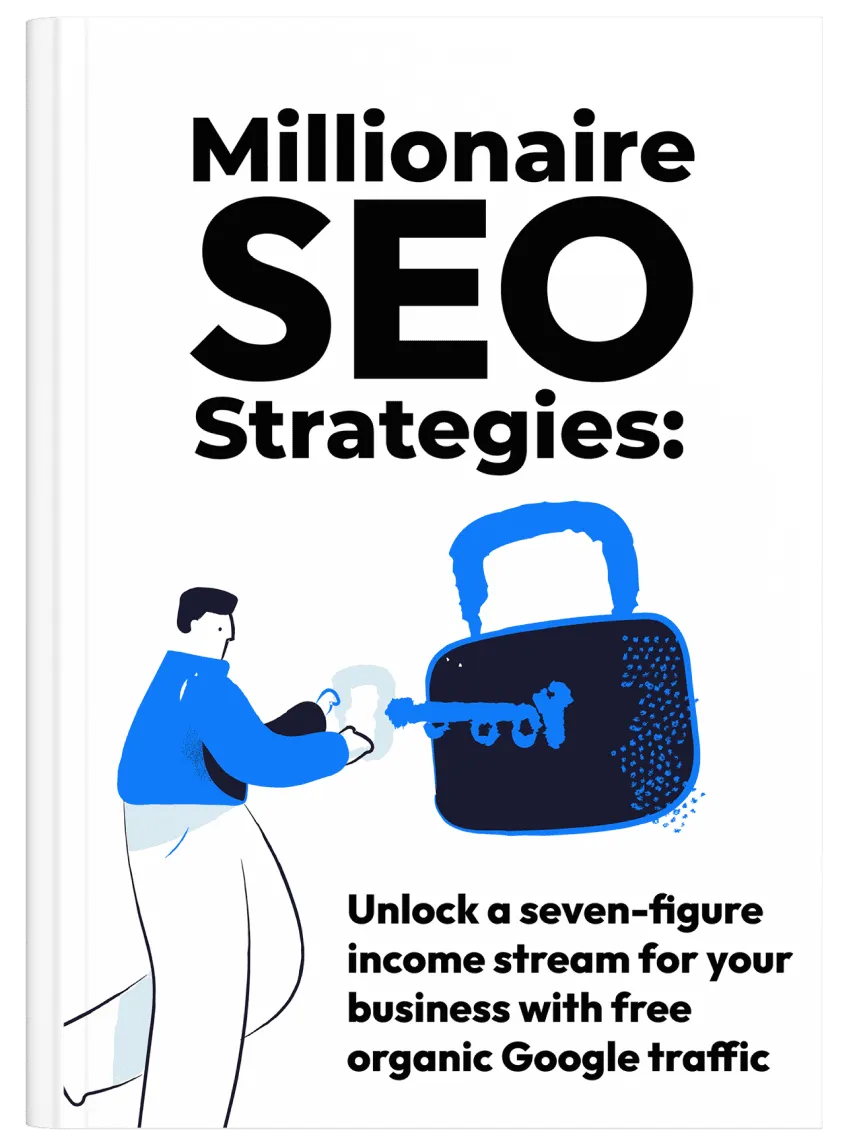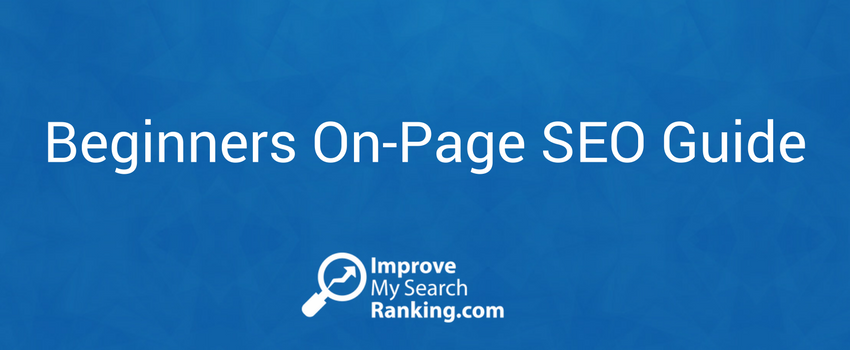
Advanced On-Page SEO Techniques
For those of you that own a business and are savvy enough to make the most of the online demand in your industry, have you made sure each of your webpages are optimised to appear as high as possible in Google?
As you know Google influences hundreds of thousands of local business transactions everyday.
Are you doing as much as you can to take advantage of this?
This blog post looks at the 19 most important on-page SEO best practices for 2016 and beyond.
By making sure each of your pages abide by these rules you’ll make sure your website fulfills its ranking and profit making potential.
If you feel anything is missing from the list do let us know in the comment section!
1. Metadescription
A page’s metadesciption does not directly influence its position in the search engine results pages (SERPs), however it is extremely important to the final human user. Let’s not forget that we are building our website for humans rather than search engine robots! Bearing this in mind it is of great importance that the metadescription is written in a compelling fashion to entice searchers to click-through to your website. We recommend that you test and measure a variety of different metadescriptions to see which works best for you.
Best Practice Length
Each pages metadescription should be limited to 156 characters as this is the limit Google displays in search results pages.
If your page does not have a metadescription assigned to it the first 156 characters from the page copy will be used instead (or a random string of text from you page that the search engine believes to be most relevant to the search).
2. Title Tag
Aside from the overall content, the title tag is the most important on-page factor. It is a key relevancy factor that search engine robots use to understand the main topic of a page. Understanding this, make sure the first word in your title is that page’s target keyword.
An exception to this rule can be made if your brand is extremely popular and a differentiating factor, in some cases having you brand name as the first word in the title can help you stand out from the crowd.
Best Practice Length
All title tags should contain 70 characters or fewer as this is the limit Google displays in search results pages.
Most SEOs suggest the perfect format for a title tag as one of the following;
- 1. Primary Keyword – Secondary Keyword – Brand Name
- 2. Brand Name | Primary Keyword and Secondary Keyword
- 3. Primary Keyword | Brand Name | Secondary Keyword
3. URL Structure, Length and Path
The URL of a page is an important relevancy factor search engine robots take into consideration when ranking your page. Make sure you include your target keywords here.
- A good example would be; www.www.improvemysearchranking.com/on-page-seo-advanced-guide.
- A bad example would be www.improvemysearchranking.com/kssf/9=2832.php
Danny Dover (expert SEO and former Moz employee) has pointed out that excessively long URLs may hurt search ranking positions. His research found that 2083 characters is the max length URL parsed by Internet Explorer. However, I would suggest using a maximum of 6-10 words separated by hyphens.
A further factor to consider is the path of the page. An authority boost will be experienced the closer a page is to its domain homepage.
4. Heading Tags
Heading tags are important for both human readers and search engine robots alike. Use of keywords in headings is another relevancy factor Google takes into consideration.
Include primary keywords in H1 tags, and secondary keywords in H2 and H3 tags.
5. Killer Content
You have probably heard the phrase ‘content is king’- having great content will reduce bounce rates and increase visitor time on site. It is known that Google pays attention to these interaction-based ranking factors. Use videos, infographics and other multimedia to keep visitors engaged on your site.
6. Keyword Repetition and Prominence:
A page’s target keyword should be used a number of times – Moz suggest “2-3X on short pages, 4-6X on longer ones and never more than makes sense in the context of the copy.”
Keywords should be used in the first 50-100 words of a page, if not sooner.
7. Keyword Variance:
Several studies suggest that using variances of your target keyword can lead to higher rankings.
8. Use of Bold and Italics:
It has been found that use of a keyword in bold and/or in italics has a minor impact on search rankings.
9. Image optimisation
Before uploading images to your website make sure file names have been optimised. Name image files the keyword the page is trying to rank for e.g. on-page-seo.jpg rather than IMG0192093.jpg.
Add an alt text and title attribute to each of your images using the target keyword and/or variances of it.
10. Spelling, grammar and reading level of writing
In some circles it is thought these factors directly influence your search position. Having high level content can show your content is unique and provides value.
11. Outbound link quality and theme
It is believed linking out to authority sites helps send trust signals to Google. Moreover, it is thought that the contents of the linked to page can act as a relevancy factor. Try linking out to authoritative pages that refer to the same topic.
12. Page loading times
This relatively new ranking factor has a slight impact on your ranking position. It also affects usability. Google offers site speed tests and recommendations.
13. Helpful Supplementary Content and links to references and sources:
Similar to the above, link out to useful complementary web pages. This builds trust.
14. Duplicate content
Content that is identical to that on another website or page on your domain can negatively influence a site’s position in the search rankings.
It can actually lead to a search engine penalty.
15. Number of Outbound Links
It is recommended that less than 150 outbound links exist on any page. ‘SEO juice’ is leaked to each of these pages so try to number them.
16. Social signals
Social signals are becoming more important to search engine algorithms. Although not fully tested, the number of Likes, Tweets and shares has a small influence on your page’s visibility in the SERPs.
It is a good idea to include social sharing buttons for this reason + the opportunity that more people will discover your content via social media channels.
17. Google Authorship
Google CEO Eric Schmidt: “Within search results, information tied to verified online profiles will be ranked higher than content without such verification, which will result in most users naturally clicking on the top (verified) results.”
Link your Google + account to your website to receive this ranking factor. Doing this also adds an image to your page’s result in the SERPs and this has proven to improve click-through rates.
It is also thought that the more authoritative you are on Google + the more ranking power a page authored by you will be given.
18. Internal Linking and Sitemap
The number and the quality of internal links pointing at a page will influence its importance on its own domain. The more powerful internal links pointed at it the higher it will rank.
The priority of a page on a domain’s site map has also been proven to affect a pages visibility.
19. Content Length:
The content on each of your pages should be over 450 words. Try to avoid anything less so the content of your site doesn’t seem ‘thin’.
You will find the infographic is influenced by Brian Dean and you can read our interview we did with Brian here.
By Josh Hamit @hamit @ImproveMySearch









Very informative SEO infographic for people with great eye sight! 🙂
Haha thanks, Rebekka! Just click on the image to open it on a new page where you can zoom 😉
very good design and well created with great information. Josh the content looks very good and helping all the other SEO’s out there.
Thanks Fernando, I’m glad you like the content!
Hey, Josh,
Great useful tips. All these are really great practice for getting best result for on-page SEO. Also, placing focus keywords within first 100 words are essential for on-page optimization. Yes, increasing page speed, mobile optimization, image optimization are really great techniques. Also, checking for broken links and fixing 404 errors are great for on-page SEO. Thanks for sharing these excellent strategies.